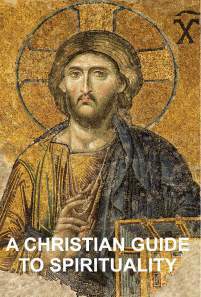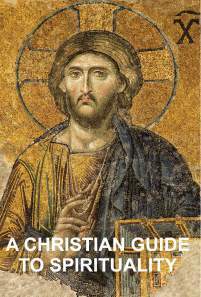Stephen W. Hiemstra's Blog, page 280
October 19, 2014
Prayer Day 49: A Christian Guide to Spirituality by Stephen W. Hiemstra

Available on Amazon.com
Heavenly Father, beloved Son, Holy Spirit. We thank you that you do not leave us alone and that you care for us. Inspire our hearts and illumine our minds so that we can be light in a dark and confusing world. In Jesus’ precious name, Amen.


October 17, 2014
Ascension

Photo by Stephen W. Hiemstra
“He ascended to heaven and is seated at the right hand of God the Father almighty.” [1]
By Stephen W. Hiemstra
The ascension is where Jesus commissions the church.
The Gospels of Mark and Luke briefly describe Christ’s ascension. For example, Mark reports the ascension with these words: “So then the Lord Jesus, after he had spoken to them, was taken up into heaven and sat down at the right hand of God.” (Mark 16:19) Luke 24:50 places the ascension near Bethany. The Gospel of Matthew ends, not with the ascension, but with the Great Commission [2] while the Gospel of John focuses more on specific instructions to given to the disciples [3].
The key to understanding the ascension arises in the Book of Acts, which outlines a parallel between Jesus’ work and the work of the disciples. In life on earth and in life after death, Christ is our model.
Just like Christ asserts God’s sovereignty over heaven and hell in his death on the cross, the disciples are commissioned to assert God’s sovereignty over the earth after the ascension. Just before he ascended, Jesus said:
. . . But you will receive power when the Holy Spirit has come upon you, and you will be my witnesses in Jerusalem and in all Judea and Samaria, and to the end of the earth. (Acts 1:8)
This parallel ministry is also discussed in John’s Gospel: “As the Father has sent me, even so I am sending you.” (John 20:21) We see parallel language also in the Lord’s Prayer: “Your kingdom come, your will be done, on earth as it is in heaven.” (Matt 6:10) [4]
Christ’s ascension also includes one of the lighter moments in scripture:
And when he [Jesus] had said these things, as they were looking on, he was lifted up, and a cloud took him out of their sight. And while they were gazing into heaven as he went, behold, two men stood by them in white robes, and said, “Men of Galilee, why do you stand looking into heaven? This Jesus, who was taken up from you into heaven, will come in the same way as you saw him go into heaven.” (Acts 1:9–11)
In other words, Christians are not supposed to leave their heads in the clouds and stare off into space! [5] What seems humorous is actually serious and includes a warning. Disciples who leave their heads in the clouds are warned that Christ will return, which is, perhaps, an allusion to the parable of the talents that includes judgment of slothful servants (Matt 25:14–28).
The ascension links us to Christ’s work in heaven. The Book of Hebrews describes Jesus’ work as a high priest in heaven interceding in prayer for us (Heb 8:1–2). It should come as great comfort that Jesus, who we know, will sit in judgment when we appear before God’s judgment seat [6]. If heaven works like the North Star in our Christian walk, then Christ’s ongoing work in heaven is the heart of that star (Alcorn 2006, xi). And Christ inspires the church’s work here on earth.
[1] The references in this chapter to the Apostle’s Creed are all taken from FACR (2013, Q/A 23). Another translation is found in (PCUSA 1999, 2.1—2.3).
[2] “Go therefore and make disciples of all nations, baptizing them in the name of the Father and of the Son and of the Holy Spirit, teaching them to observe all that I have commanded you. And behold, I am with you always, to the end of the age.” (Matt 28:19–20)
[3] For example: “Jesus said to him [Peter],’ If it is my will that he remain until I come, what is that to you? You follow me!’” (John 21:22)
[4] Also: Luke 24:49, Acts 1:4, and John 14:26. The Great Commission in Matt 28:18–20 also links heaven and earth in evangelism.
[5] C. S. Lewis (2001, 134) observed: “If you read history you will find that the Christians who did most for the present world were just those who thought most of the next.”
[6] As the Apostle Paul told the Athenians: “The times of ignorance God overlooked, but now he commands all people everywhere to repent, because he has fixed a day on which he will judge the world in righteousness by a man whom he has appointed; and of this he has given assurance to all by raising him from the dead.” (Acts 17:30–31)
REFERENCES
Alcorn, Randy. 2006. 50 Days in Heaven: Reflections that Bring Eternity to Life. Carol Stream, IL: Tyndale House Publishers, Inc.
Faith Alive Christian Resources (FACR). 2013. The Heidelberg Catechism. Cited: 30 August, 2013. Online: https://www.rca.org/sslpage.aspx?pid=372.
Lewis, C. S. 2001. Mere Christianity (Orig Pub 1950). New York: Harper Collins Publishers, Inc.
Presbyterian Church in the United States of America (PC USA). 1999. The Constitution of the Presbyterian Church (U.S.A.)—Part I: Book of Confession. Louisville, KY: Office of the General Assembly.


Ascensión

Photo by Stephen W. Hiemstra
“ascendió al cielo y está sentado a la diestra de Dios Padre Todopoderoso” [1]
Por Stephen W. Hiemstra
La ascensión es donde Jesus encargó la iglesia.
Los evangelios de Marco y Lucas describen brevemente la ascension de Cristo. Por ejemplo, Marco reportó que la ascension con estas palabras: “Entonces, el Señor Jesús, después de hablar con ellos, fue recibido en el cielo y se sentó a la diestra de Dios.” (Mar 16:19 NBH) Lucas 24:50 pusó la ascension cerca de Betania. El evangelio de Mateo finaliza, no de la ascension, pero con en Gran Comission [2] mientras el evangelio de Juan se centra más en las instrucciónes que fueron dado a los discípulos [3].
El clave para entender la ascensión se planteo en el libro de Hechos, donde se delinea un paralelismo entre la obra de Jesús y la obra de los discípulos. En la vida en la tierra y en la vida después la muerte, Cristo es nuestro modelo.
Al igual como Cristo afirma la soberanía de Dios sobre el cielo y la infierno en su muerte en la cruz, los discípulos estan encargado a afirmar la soberanía de Dios sobre la tierra después la ascensión. Justo antes ascendió, Jesús dijó:
. . . pero recibirán poder cuando el Espíritu Santo venga sobre ustedes; y serán Mis testigos en Jerusalén, en toda Judea y Samaria, y hasta los confines de la tierra. (Act 1:8 NBH)
Este ministerio paralelo es también describido en el evangelió de Juan: “como el Padre Me ha enviado, así también Yo los envío.” (John 20:21 NBH) Vemos esta lenguaje paralelo también en el Padre Nuestro: “Venga Tu reino. Hágase Tu voluntad, Así en la tierra como en el cielo” (Matt 6:10 NBH) [4]
La ascension de Cristo también incluyó un momento más ligeros en las Escrituras: “Después de haber dicho estas cosas, fue elevado mientras ellos miraban, y una nube Lo recibió y Lo ocultó de sus ojos. Mientras Jesús ascendía, estando ellos mirando fijamente al cielo, se les presentaron dos hombres en vestiduras blancas, que les dijeron:“Varones Galileos, ¿por qué están mirando al cielo? Este mismo Jesús, que ha sido tomado de ustedes al cielo, vendrá de la misma manera, tal como Lo han visto ir al cielo.” (Act 1:9-11 NBH)
En otras palabras, Cristianos no se supone a dejar sus cabezas en las nubes y a mirar en espacio! [5] Pero, la lenguaje, que parecia humeroso, es realmente grave y incluye un advertencia. Los discípulos quien dejan sus cabezas en las nubes se advierten de que Cristo volverá, que es, tal vez, un allusion a la parabola de los talentos que incluye juicio de los siervos perezosos (Mateo 25:14-28).
La ascensión conecta nos a la obra de Cristo en el cielo. El Libro de Hebreos describe la obra de Jesus como Sumo Sacerdote en cielo que intercede en oración para nosotros (Heb 8:1-2). Se viene como gran consuelo que Jesus, quien sabemos, se sentará en el juicio cuando somos comparezcamos antes el tribunal de Dios [6]. Si el cielo trabaja como el Estrella del norte en nuestro camino Cristiano, la obra constante de Cristo es la Corazon de esa Estrella (Alcorn 2006, xi). Y Cristo inspira también la obra de la iglesia aqui en la tierra.
[1] Iglesia Presbiteriana (2009, 35).
[2] “Vayan, pues, y hagan discípulos de todas las naciones, bautizándolos en el nombre del Padre y del Hijo y del Espíritu Santo, enseñándoles a guardar todo lo que les he mandado; y ¡recuerden (he aquí)! Yo estoy con ustedes todos los días, hasta el fin del mundo.” (Matt 28:19-20 NBH)
[3] Por ejemplo: “Jesús le [Pedro] dijo:“Si Yo quiero que él se quede hasta que Yo venga, ¿a ti, qué? Tú, Sígueme.” (John 21:22 NBH)
[4] También: Luke 24:49, Acts 1:4, y John 14:26. La Gran Comisión en Matt 28:18-20 también enlaza el cielo y la tierra en evangelism.
[5] C.S. Lewis (2001, 134) observó: “Si lee la historia encontrará que los Cristianos quien más hizo por el mundo presente fueron también quien pensaban la mayoría de la proxima.”
[6] Como el Apóstol Pablo dijó a los Athenios: ““Por tanto, habiendo pasado por alto los tiempos de ignorancia, Dios declara ahora a todos los hombres, en todas partes, que se arrepientan.“Porque El ha establecido un día en el cual juzgará al mundo en justicia, por medio de un Hombre a quien El ha designado, habiendo presentado pruebas a todos los hombres cuando Lo resucitó de entre los muertos.” (Act s17:30-31 NBH)
REFERENCIAS
Alcorn, Randy. 2006. 50 Days in Heaven: Reflections that Bring Eternity to Life. Carol Stream, IL: Tyndale House Publishers, Inc.
Iglesia Presbiteriana (E.U.A.) 2009. El Libro de Adoración. Preparado por la Oficina de Teología y Adoración. Louisville, KY: Geneva Press.
Lewis, C. S. 2001. Mere Christianity (Orig Pub 1950). New York: Harper Collins Publishers, Inc.

October 15, 2014
Resurrection
 “The third day he rose again from the dead.” [1]
“The third day he rose again from the dead.” [1]
By Stephen W. Hiemstra
Why should we believe in the resurrection?
The truth of the resurrection became the most important confession of the early church. In John’s Gospel faith consists, primarily, in believing in the resurrection (John 20:25–29). Paul’s letter to the Romans states it plainly: “if you confess with your mouth that Jesus is Lord and believe in your heart that God raised him from the dead, you will be saved” (Rom 10:9). Paul knew this truth first hand because the risen Christ appeared to him on the road to Damascus—a story recorded three times in the Book of Acts [2]. At one point, the risen Christ appears to more than five hundred witnesses in just one setting (1 Cor 15:6).
The resurrection event changed the Apostle’s lives forever. Ten of the eleven faithful apostles died a martyr’s death [3]. The fact that they were willing to die for their beliefs is strong historical evidence for the truth of the resurrection.
Peter’s sermon at Pentecost in Jerusalem speaks of both the prophecy of the resurrection and the eye witness accounts. Peter cites this prophecy: “For you will not abandon my soul to Sheol, or let your holy one see corruption” (Ps 16:10). The original context of the Psalm points to King David [4], but Peter, as an apostle, correctly interprets the “holy one” as referring also to Jesus (Acts 2:27–31). Peter’s next statement is most telling: “This Jesus God raised up, and of that we all are witnesses.” (Acts 2:32) Peter’s argument was both truthful and compelling because it convinced more than three thousand people to be baptized that day (Acts 2:41).
At least three reasons motivate us to believe in the resurrection. The first reason was given by Paul: “if Christ has not been raised, your faith is futile and you are still in your sins.” (1 Cor 15:17) We obtain forgiveness from God only because of Christ’s perfect sacrifice as the Lamb of God. A second reason follows from the first. Jesus’ resurrection makes our resurrection and eternal life possible. A third reason is that in the resurrection God attested Jesus as the Christ (Acts 17:31). Jesus’ path in life, death, and resurrection then becomes the template for our faith and the only source of our salvation (Phil 3:10–11).
[1] The references in this chapter to the Apostle’s Creed are all taken from FACR (2013, Q/A 23). Another translation is found in (PCUSA 1999, 2.1—2.3).
[2] Paul’s conversion was so powerful that he ceased being one of the church’s chief persecutors and he became one of the early church’s strongest evangelists (Acts 8:3). Also see: Acts 8:3–5, 22:6–8, and 26:13–15.
[3] The Apostle John was the only one of the eleven faithful disciples that did not die a martyr (Fox and Chadwick 2001, 10).
[4] The verse is a Hebrew doublet. The two parts repeat the same thought. Therefore, holy one refers to my soul.
REFERENCES
Faith Alive Christian Resources (FACR). 2013. The Heidelberg Catechism. Cited: 30 August, 2013. Online: https://www.rca.org/sslpage.aspx?pid=372.
Fox, John and Harold J. Chadwick. 2001. The New Foxes’ Book of Martyrs (Orig Pub 1563). Gainsville, FL: Bridge-Logos Publishers.
Presbyterian Church in the United States of America (PC USA). 1999. The Constitution of the Presbyterian Church (U.S.A.)—Part I: Book of Confession. Louisville, KY: Office of the General Assembly.


Resurrección
 “al tercer día resucitó de entre los muertos” [1]
“al tercer día resucitó de entre los muertos” [1]
Por Stephen W. Hiemstra
¿Por qué debemos creer en la resurrección?
La verdad de la resurrección se convirtió en la confesión más importante de la iglesia primativa. En el evangelío de Juan la fe consiste, principalmente, en la creencia en la resurrección (John 20:25-29). La carta de Pablo a los Romanos lo dice claramente: “que si confiesas con tu boca a Jesús por Señor, y crees en tu corazón que Dios Lo resucitó de entre los muertos, serás salvo.” (Rom 10:9 NBH) Pablo sabía esta verdad por si mismo por la razon que el cristo resucitado se le apareció por el camino a Damasco—una historia registra tres veces en el libro de Hechos [2]. En un momento dado, el cristo resucitado aparecio a más que quinientos testigos en sólo ajuste (1 Cor 15:6).
El resurrección acontecimiento cambia las vidas de los Apóstoles por siempre. Diez de los once Apóstoles fieles murieron una muerte de mártir [3]. El hecho que estaban dispuestos a morir por su creencia es evidencia fuerte y historico para la verdad de la resurreccion.
El sermón de Pedro en Pentecostés en Jerusalén habla tanto de la profecía de la resurrection y cuentas de testigos oculares. Pedro cita esta profecía: “Porque Tú no abandonarás mi alma en el Seol, Ni permitirás que Tu Santo sufra corrupción.” (Psa 16:10 NBH) El contento original del Salmo punta al Rey David [4], pero Pedro, como un apostol, interpreta corectamente “el Santo” como referencia tambien de Jesus (Acts 2:27-31). El proxima comentario del Pedro estaba important: “A este Jesús resucitó Dios, de lo cual todos nosotros somos testigos.” (Acts 2:32 NBH) El argumento de Pedro era ambos verdad y convincente por que se habia convencido más que tres mil personas a ser bautizados por ese dia (Acts 2:41).
Por lo menos tres razones motivan nos a creer en la resurrección. La razón primera fue dado de Pablo: “y si Cristo no ha resucitado, la fe de ustedes es falsa y todavía están en sus pecados.” (1 Cor 15:17 NBH) Obtenemos perdón de Dios sólo por razon del sacrificio perfecto de Cristo como el Cordero de Dios. La razón segunda sigue de la primera. La resurrección de Jesús hace que nuestro resurrección y la vida eternal es posible. La razón tercera es que en la resurreccion Dios ha dado pruebas a todos que Jesús es el Cristo (Acts 17:31). El camino de Jesús en la vida, la muerte, y resurrección entonces se convierte en un modelo por nuestro fe y la única fuente de nuestra salvación (Phil 3:10-11).
[1] Iglesia Presbiteriana (E.U.A.) 2009. El Libro de Adoración. Preparado por la Oficina de Teología y Adoración. Louisville, KY: Geneva Press. Pagina 35.
[2] La conversión de Pablo era tan poderoso que él dejó ser a perseguidor principal de la iglesia y se convirtió a uno de los evangelistas más fuerte de la iglesia primativa (Acts 8:3). También vea Acts 8:3–5, 22:6–8, y 26:13–15.
[3] El Apostol Juan era lo único de los onze discipulos fieles que no murieron en un martír (Fox and Chadwick 2001, 10).
[4] Este verso es un doblete Hebreo. Las dos partes repita el pensamiento mismo. Por este razon, el santo refiere a mi alma.
REFERENCES
Fox, John and Harold J. Chadwick. 2001. The New Foxes’ Book of Martyrs (Orig Pub 1563). Gainsville, FL: Bridge-Logos Publishers.
Iglesia Presbiteriana (E.U.A.) 2009. El Libro de Adoración. Preparado por la Oficina de Teología y Adoración. Louisville, KY: Geneva Press.

October 13, 2014
Penn Whispers to Professional Speakers
 Joanna Penn. 2014. Public Speaking for Authors, Creatives, and Other Introverts. UK: Creative Penn Limited.
Joanna Penn. 2014. Public Speaking for Authors, Creatives, and Other Introverts. UK: Creative Penn Limited.
Review by Stephen W. Hiemstra
In analyzing the results of the launch of my first book last month, a surprising finding emerged. While my online sales were frustratingly few, sales during personal appearances were stronger than for typical authors [1]. The question then came up: should I be speaking more? And what should such speaking look like? When I stumbled across Joanna Penn’s book, Public Speaking for Authors, Creatives, and Other Introverts, I immediately ordered a copy.
Mind you, I have been speaking publicly for most of my professional life, both as an economist and as a pastor. However, economists typically address audiences of other economists and pastors typically address a familiar congregation. In neither case is the audience wholly unfamiliar; in both cases the audience response is fairly gracious of what is being presented [2]. Public speaking to unfamiliar audience to speak about a book is a bit more out there than I am accustomed to.
Penn states her writing objective as follows: In this book, I’ll share everything that I know as a professional speaker and introvert (11). She breaks this objective down into 4 parts:
The practicalities of speaking;
The psychological aspects of speaking;
The business side; and
Interviews with professional speakers (11).
In other words, this book focuses on things that speakers do and worry about; it does not focus on how to write and deliver good speeches.
An important point in my own choice of this book is that Penn straddles 2 worlds: public speaking and book writing and publishing. While there is a lot of overlap these days between these 2 worlds—speakers that write (politicians, for example) and writers that speak (best-selling authors that do appearances)—the mechanics of these 2 professional realms are filled with thousands of unwritten rules, details, and networking requirements. If the subject matter were different, an entirely different set of observations would arise. Think of the worlds of IT gurus or sports figures or film stars. Penn’s niche and expertise speaks specifically into my space as a writer/publisher.
Penn drills down into her audience a bit deeper by focusing on the fears and anxieties of “introverts” and “creatives”. In some sense, she is carving out a niche here with not just authors, but authors focused on creative writing. Perhaps even more specifically female, creative writers (17-19) [3].
Two sections of the book were of special interest to me. The first focused on 6 types of speaking. Penn lists those as:
Keynote/Inspirational speaking;
Content speaking;
Workshop presenting/facilitating;
Mc/Event chair;
Chair of panel or panelist; and
Reader/performer of your own work (24-25).
I suppose that an author presenting their own work might fit into most of these types, depending on the work. One type of speaking on my mind as I read the book is not on the list: radio interviewing.
The second section of special interest to me was her discussion of using video. For example, Penn sees 6 uses for video:
Self-improvement tool;
Evidence of speaking ability;
Bonus material for spicing up sessions;
Testimonials;
Marketing; and
Premium product for customers (133-134)
Although I have produced a number of You-Tube videos for Leader and Media Guides [4] to promote my book, video remains a source of anxiety for me [5]. Seeing the scope of use for video helps to reduce anxiety by demonstrating the range and real value of their use.
Penn’s background in marketing broke through in her comments on social media. She cites the AIDA principle:
Attention. Social media content lets people know you exist and what you do. Hopefully, your content is interesting and informative
Interest. Once people know you exist, they have to know how to find you.
Desire. Once people know that you exist, they need to know that they can trust you. Are you authentic or simply interested in attention?
Action. Once people know you, how to find you, and trust you, then when an appropriate occasion arises they may turn to you for advice and products (129-130).
AIDA makes sense not only in social media, pastors effectively use it by practicing a “ministry of presence”. It also works with animals, like horses [6].
Joanna Penn’s Public Speaking for Authors, Creatives, and Other Introverts is a real gem. Over the years I have read a number of books on public speaking—most on preaching—and this is the first book with real value added in terms of what speakers worry about most—the zillions of details where things go wrong or should be prepared for in advance. Penn is obviously very readable. Authors should take special note.
[1] Members of my book club reported that the industry average number of sales for a public book signing was 3 books. My first two appearances resulted in sales of 8 and 10 books.
[2] Economists sometimes talk about the “prisoner’s dilemma”. Prisoners informally agree without consultation not to “rat each other out”, in part, because of the threat of retaliation in kind. Economists may seem to be a tough bunch to present in front of because of all the tough questions, but the informal agreement usually is to limit questions to the topic at hand—no ad hominem (personal) attacks.
[3] Penn lists her Myers Briggs type as INFJ (18). This is surprising because her book abounds with details—a big selling point for readers and a classic flag for a sensate personality, not intuitive personality—more like an ISFJ.
[4] Check out T2Pneuma.com.
[5] To borrow a phrase from Garrison Keillor, I am particularly shy of video and Skype where my “face made for radio” might be a liability hard to control for.
[6] A film called The Horse Whisperer (1998) staring Robert Redford and Kristin Scott Thomas, employed a ministry of presence to calm frightened horses (http://en.wikipedia.org/wiki/The_Horse_Whisperer_(film)).


October 12, 2014
Prayer Day 48: A Christian Guide to Spirituality by Stephen W. Hiemstra

Available on Amazon.com
Almighty Father. We praise you for who you and for being worthy of our praise. Draw us to yourself. Reconcile us with our neighbors. May we lay our crowns before you and rest only with you. In the power of your Holy Spirit, open our hearts; illumine our minds; strengthen our hands in your service. In the Jesus’ name, Amen.


October 10, 2014
Hell

Art by Stephen W. Hiemstra
“he descended to hell.”[1]
By Stephen W. Hiemstra
What is hell?
Scripture has many colorful terms that translate into the English word for hell. Among them are: Sheol (OT only; 65 verses), the Abyss (or bottomless pit; 13), Gehenna (NT only; 11), Hades (9), Abaddon (7), and place of darkness (1). Jesus’ favorite term was Gehenna which refers to a dump in the Valley of Hinnom near Jerusalem where garbage was burned [2].
The list of words for hell here is, however, incomplete because most of the colorful expressions referring to hell are metaphorical. For example, an angel in Revelation 18:2 cries out in John’s vision:
“Fallen, fallen is Babylon the great! She has become a dwelling place for demons, a haunt for every unclean spirit, a haunt for every unclean bird, a haunt for every unclean and detestable beast . . .”
In other words, hell is a kind of prison reserved for the demons, the sinful, and the ritually unclean—all sorts of creatures that oppose heaven and God himself (Isa 7:11). Hell is sealed for everyone, except for God (Job 26:6).
Non-biblical visions of hell also exist. For example, C.S. Lewis (1973, 10–11) pictures hell as a place where people voluntarily move further and further apart.
So why does Jesus go to hell for three days?
The culturally expected answer in the first century would have been that Jesus was dead and that was where dead people went. We read, for example: “For in death there is no remembrance of you; in Sheol who will give you praise?” (Ps 6:5) But Jesus was not just another dead guy!
A better answer is that with the crucifixion, God’s sovereignty over heaven and earth—including hell—was confirmed (Ps 139:8). This might explain, for example, why Jesus’ death was accompanied by an earthquake and by resurrection of dead saints from tombs in Jerusalem (Matt 27:51–54) [3].
The best answer to the question is that the reason why Jesus descended into hell remains a mystery. But, hell’s existence is no longer a mystery—Jesus went there.
[1] The references in this chapter to the Apostle’s Creed are all taken from FACR (2013, Q/A 23). Another translation is found in (PCUSA 1999, 2.1—2.3).
[2] γέεννα (BDAG 1606).
[3] Of course, later with the resurrection death and Hades itself were overthrown.
REFERENCES
Faith Alive Christian Resources (FACR). 2013. The Heidelberg Catechism. Cited: 30 August, 2013. Online: https://www.rca.org/sslpage.aspx?pid=372.
Lewis, C. S. 1973. The Great Divorce: A Dream (Orig Pub 1946). New York: HarperOne.
Presbyterian Church in the United States of America (PC USA). 1999. The Constitution of the Presbyterian Church (U.S.A.)—Part I: Book of Confession. Louisville, KY: Office of the General Assembly.


El Infierno

Art by Stephen W. Hiemstra
“Descendio a los infiernos” [1]
Por Stephen W. Hiemstra
¿Qué es el infierno?
La escritura santa tiene muchos términos de colores que traducen en la palabra en Español para el infiernos. Ellas incluyen: Seol (Testamento Antiguo solo; 65 versos), el Abismo (o pozo sin fondo; 13), la Gehena (Testamento Nuevo solo; 11), Hades (9), Abaddon (7), y lugar de las tinieblas (1). El término favorito de Jesus era Gehena que refiere a un vertedero de la valle de Hinom cerca de Jerusalén donde se quemaba la basura [2].
La lista de palabras por el infierno aquí es, sin embargo, incomplete porque la mayoría de los expresiones de colores que refiere al infierno estan metaforica. Por ejemplo, el ángel en Apocalipsis 18:2 grita en un visión de Juan:
“¡Cayó, cayó la gran Babilonia! Se ha convertido en habitación de demonios, en guarida de todo espíritu inmundo y en guarida de toda ave inmunda y aborrecible …”
In otras palabras, el infierno es un tipo de cárcel reservado para los demones, los pecadores, y los inmundo ritualmente—todos tipos de criaturas que oponian de el cielo y Dios mismo (Isa 7:11). El infierno está sellado para todos, excepto Dios (Job 26:6).
También existen visiónes no-biblicos del infierno. Por ejemplo, C.S. Lewis (1973, 10-11) escribi que el infierno esta un lugar donde la gente se mueve voluntariamente más y más separados.
¿Entonces, por qué se vaya Jesús al infierno para tres días?
La repuesta culturalmente se espera en el siglo primero sería que Jesus fue muerto y allí era el lugar donde los muertos vayan. Por ejemplo, leemos: “Porque no hay en la muerte memoria de Ti; En el Seol, ¿quién Te da gracias?” (Ps 6:5 NBH) ¡Pero, Jesus no era solamente un otro tipo muerto!
Una repuesta mejor es que con la crucifixion, la soberania de Dios sobre el cielo y la tierra—incluso la infierno—era confirmado (Ps 139:8). Esto podria explicar, por ejemplo, por qué la muerte de Jesus era acompañado por un terremoto y por la resureccion de santos muerto de tumbas en Jerusalén (Matt 27:51-54) [3].
La repuesta más major a la pregunta es que la razón porque Jesús descendió a los infiernos sigue siendo un misterio. Pero, la existencia de la infierno no esta ninguna más un misterio—Jesús fue allí.
[1] Iglesia Presbiteriana (2009, 35).
[2] γέεννα (BDAG 1606).
[3] Por supuesto, más tarde muerte y Hades tambien fueron derrocados con la resurección.
REFERENCIAS
Iglesia Presbiteriana (E.U.A.) 2009. El Libro de Adoración. Preparado por la Oficina de Teología y Adoración. Louisville, KY: Geneva Press.
Lewis, C. S. 1973. The Great Divorce: A Dream (Orig Pub 1946). New York: HarperOne.

October 8, 2014
Suffering

Art by Stephen W. Hiemstra
“He suffered under Pontius Pilate, was crucified, died, and was buried.” [1]
By Stephen W. Hiemstra
Why do we care about Christ’s suffering on the cross?
The Apostle Peter said it best: “By his wounds you have been healed”. (1 Pet 2:24) [2] The Jewish authorities said that Jesus claimed to be a king and charged Jesus with sedition (Mark 15:2) [3]. In fact, Jesus was a king (messiah) in the Jewish sense, but not a king (political rival) in a Roman sense. For this reason, the Roman Governor Pontius Pilate cross examined Jesus publicly and concluded: “I find no guilt in him.” (John 19:4)
Jesus’ link to Pontius Pilate underscores the credibility of his innocent suffering because, even by Roman standards, Pilate was corrupt and brutal—Pilate had Jesus both flogged and crucified solely to satisfy the blood lust of a crowd [4]. The link to Pilate also links Jesus (and the Apostle’s Creed) to a known, historical person. Not only is Pilate mentioned in Josephus, an inscription bearing the phrase “Pontius Pilate Prefect of Judea” was found in 1961 in the excavation of a theatre in Caesarea [5].
Jesus’ death on the cross underscores his extreme suffering. The Romans devised crucifixion as a method of execution by torture—it amplified the suffering inflicted. It was a slow, painful death. Crucifixion was so horrific that Roman law forbade Roman citizens from being crucified.
In Jewish tradition, death on the cross meant that one was cursed by God [6]. This is what Paul meant when he wrote: “Christ redeemed us from the curse of the law by becoming a curse for us—for it is written, cursed is everyone who is hanged on a tree.” (Gal 3:13) [7] The implication was that the crime committed was so horrible that the person deserved not only death but also eternal damnation. Burial behind a stone assured that Jesus was truly dead [8].
Because Jesus was sinless and remained innocent, even in death, he became the only sinless person to live after Adam (Heb 4:15). Unlike Adam, Jesus, whose sinless life came to an abrupt end, never gave into temptation. In death, he was accordingly a perfect (without defeat or blemish) sin offering (Lev 4:22–24). In doing so, Jesus became the Second Adam, reversing the curse of death, as validated by his resurrection (1 Cor 15:21–22).
In the same way that the Immaculate Conception con-firms Jesus’ divinity and establishes credibility with God, Jesus’ innocent suffering on the cross confirms his humanity and status as God’s chose sacrifice for our sins.
[1] The references in this chapter to the Apostle’s Creed are all taken from FACR (2013, Q/A 23). Another translation is found in (PCUSA 1999, 2.1—2.3).
[2] The Apostle Paul likewise wrote: “For while we were still weak, at the right time Christ died for the ungodly.” (Rom 5:6)
[3] Crucifixion was a penalty for sedition—rebellion against the Roman state. The inscription that Pilate placed over Jesus on the cross in Latin read: “Iesus Nazarenus rex Iudaeorum” (John 19:19 VUL). It is usually recorded with the acronym, INRI, and translates as Jesus of Nazareth, King of the Jews.
[4] By contrast, when the Apostle Paul found himself charged with profaning the temple only a few years later, another governor, Porcius Festus, simply kept him locked up for two years (Acts 24:6, 27). First century Jewish historian, Josephus (AD 38—100), records several accounts of Pilate that picture him as ruthlessness (Josephus 2009, 3.1).
[5] Pilate was Roman prefect from 26 to 36 AD (Zondervan 2005, 1714).
[6] Deut 21:22–23.
[7] Also see: Acts 5:30, 10:39, and 13:29; 1 Pet 2:24.
[8] The story of the death of Absalom illustrates this point. Absalom rebelled against his father, King David, and raised an army to over-throw him. When his hair got caught in a tree, he was considered cursed by God. David’s commander, Joab, had Absalom publicly executed, buried in a pit, and covered with stones (2 Sam 18:10–18).
REFERENCES
Faith Alive Christian Resources (FACR). 2013. The Heidelberg Catechism. Cited: 30 August, 2013. Online: https://www.rca.org/sslpage.aspx?pid=372.
Presbyterian Church in the United States of America (PC USA). 1999. The Constitution of the Presbyterian Church (U.S.A.)—Part I: Book of Confession. Louisville, KY: Office of the General Assembly.





